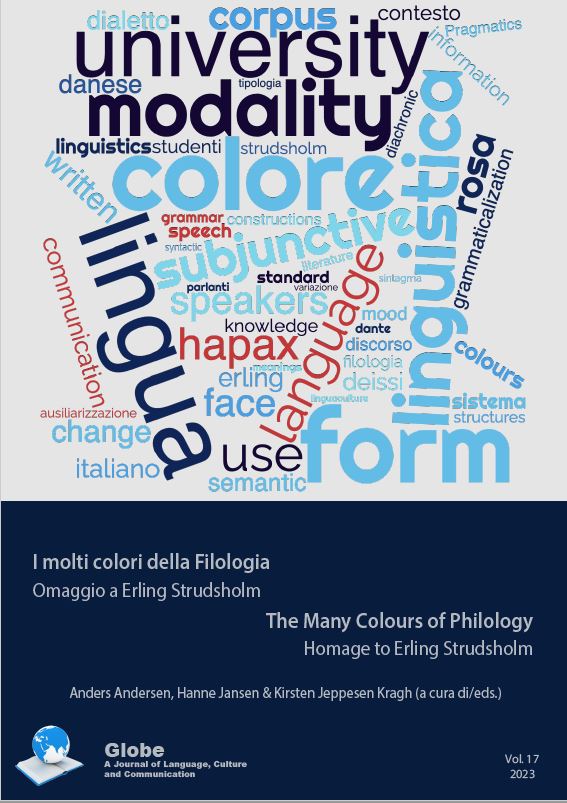La didattica e la zona grigia della grammatica italiana
DOI:
https://doi.org/10.54337/ojs.globe.v17i.8211Resumé
We try to shed light on some problems of Italian school grammar, such as the difference between verbal
predicate and nominal predicate, the typology of complements according to traditional logical analysis and
valential grammar, the difference between transitive and intransitive verbs, the typology of parts of speech and
other classifications (e.g. the distinction between nouns, adjectives, and pronouns, between conjunctions and
adverbs, between coordinates and subordinates, etc.). Starting with the concept of the «grey area of the
linguistic norm» (Serianni 2006), we intend here to broaden the discourse to the grey area of grammar. Here
we mean by grey area all those cases in which the same phenomenon is treated in a very different way by
different grammars, or cases in which there are big differences between the grammatical treatment and the
interpretation of common speakers. These fluctuations in the treatment of school textbooks do not depend on
the weakness of the linguistic system, but are often the symptom of inadequate focus on certain themes,
especially syntactic ones. Despite the diversity of grammatical traditions, the average Italian school grammar
is still too tied to prescriptivism, to hyper-logical interpretations, to a merely nomenclatory perspective in the
description of linguistic phenomena, rather than to analytical observation and the invitation to metalinguistic
reflection. School tradition still seems intent on attributing an ontological value to classifications, when instead,
in the light of the most up-to-date linguistic theories, categories once established have been radically
reconsidered. Finally, proposals for updating grammar teaching will be made, in an attempt to bridge the gap
between the latter and linguistic reflection, starting from the phenomena listed above.
Downloads
Publiceret
Nummer
Sektion
Licens
Articles published in Globe: A Journal of Language, Culture and Communication are following the license Creative Commons Attribution-NonCommercial-NoDerivs 3.0 Unported (CC BY-NC-ND 3.0). Authors retain copyright and grant the journal right of first publication with the work simultaneously licensed under a Creative Commons Attribution License: Attribution - NonCommercial - NoDerivs (by-nc-nd). Further information about Creative Commons


